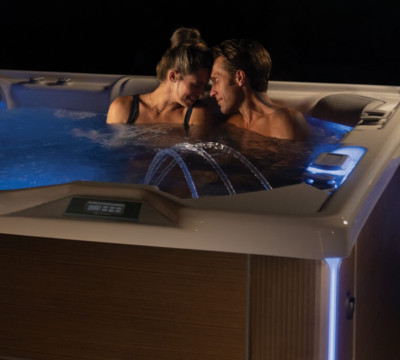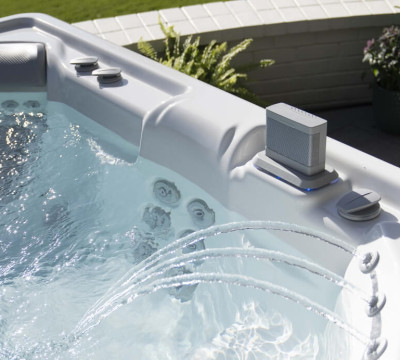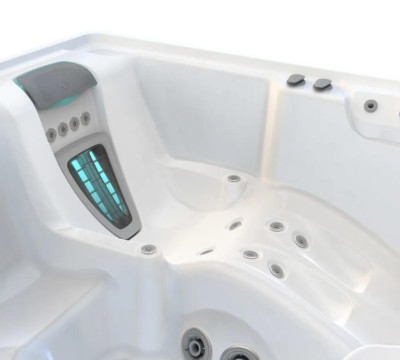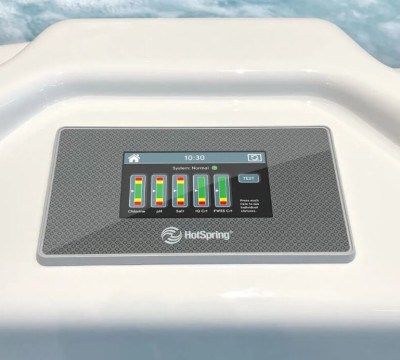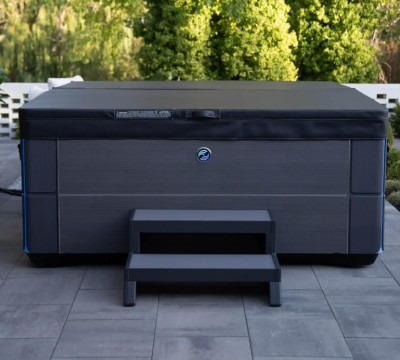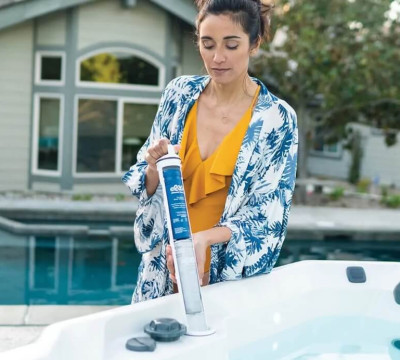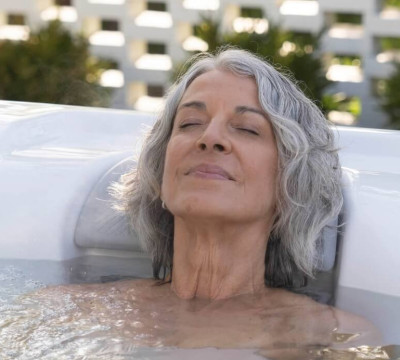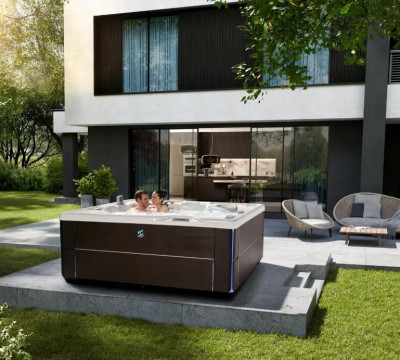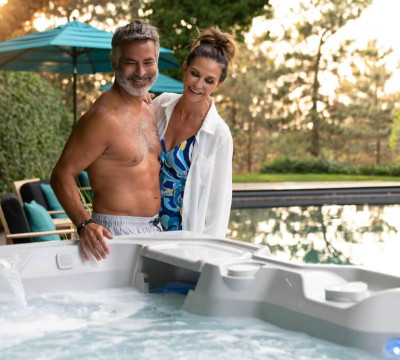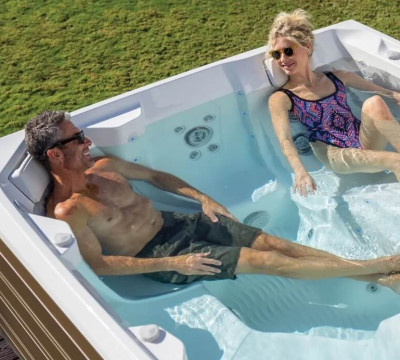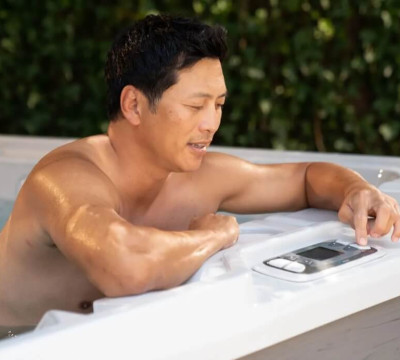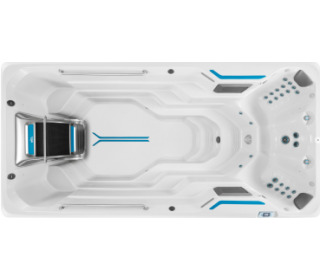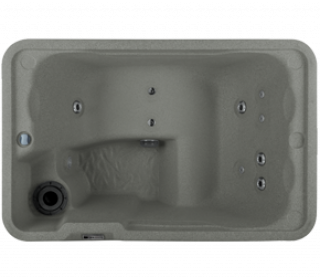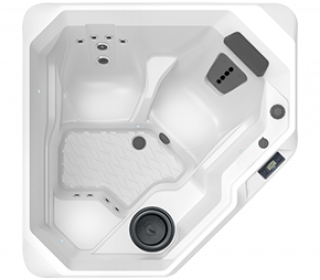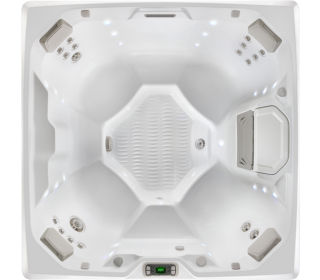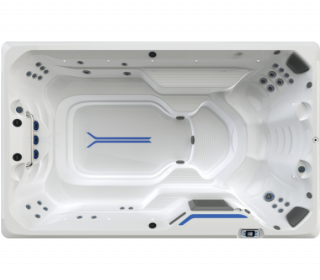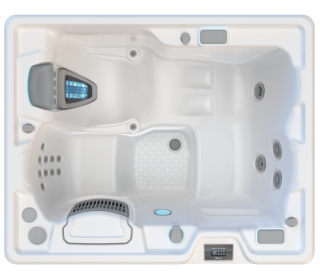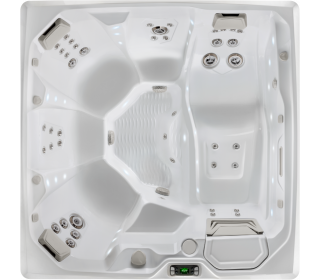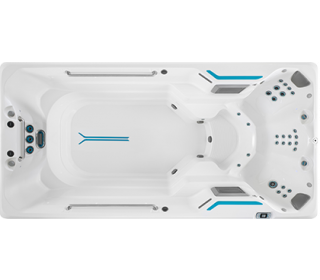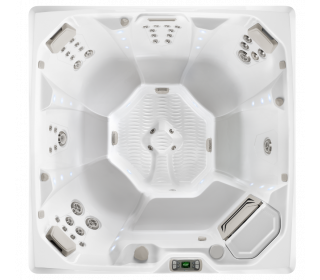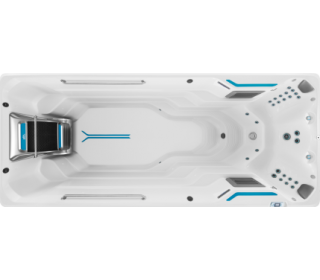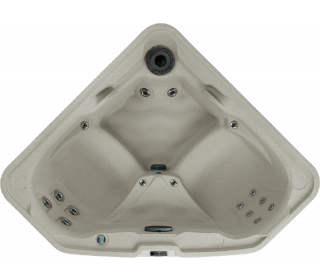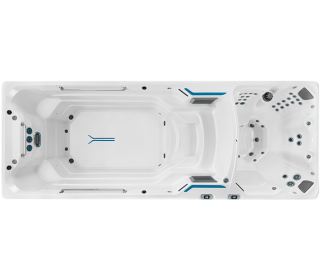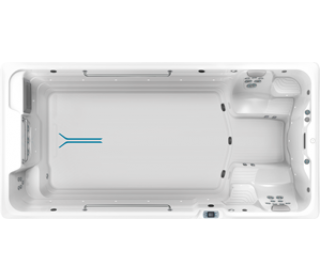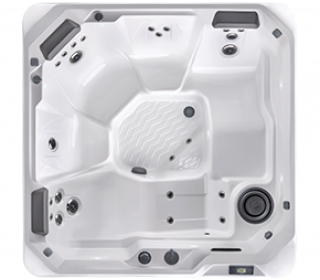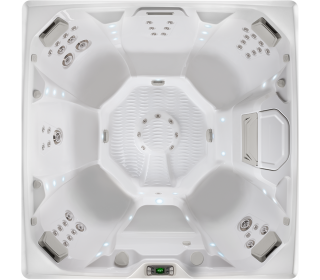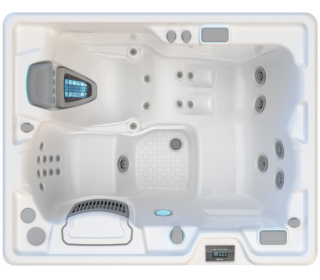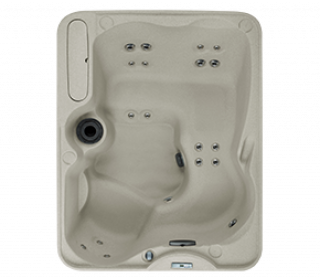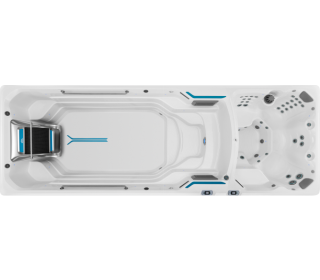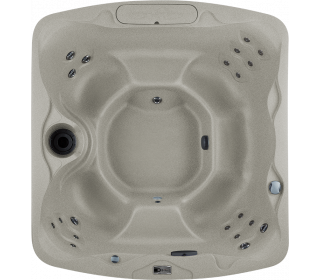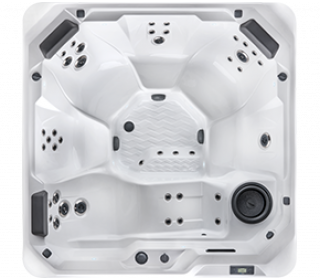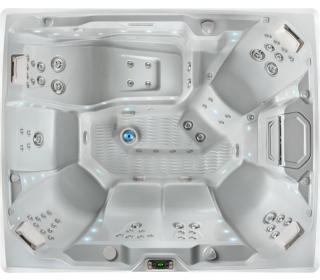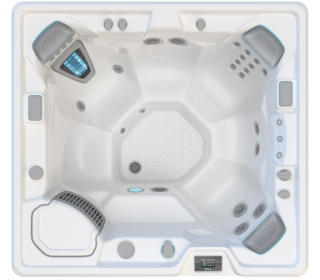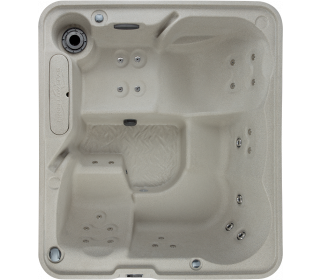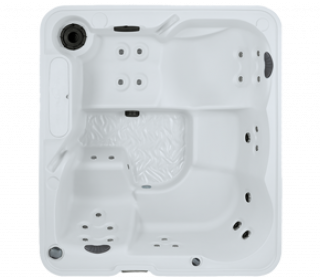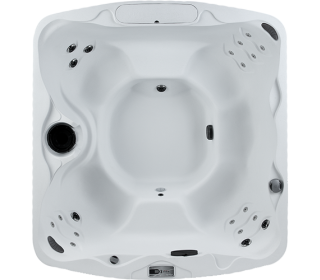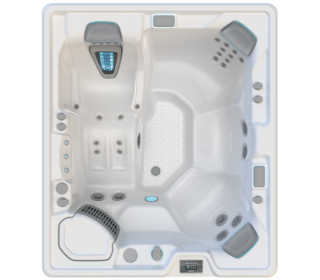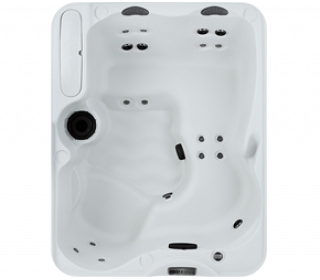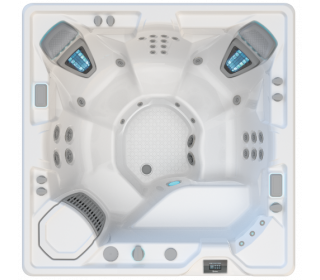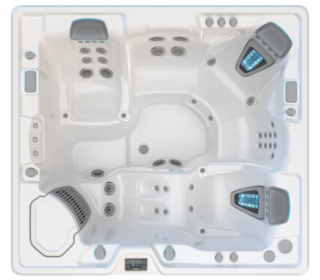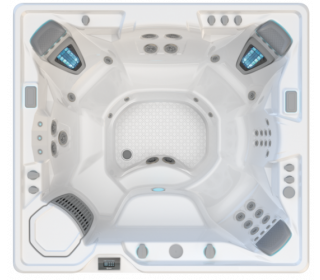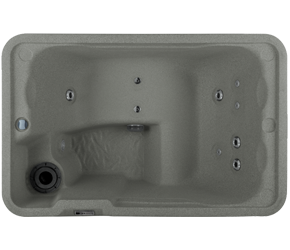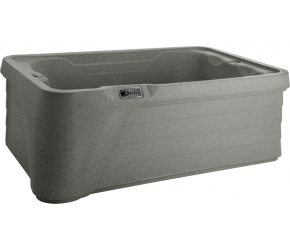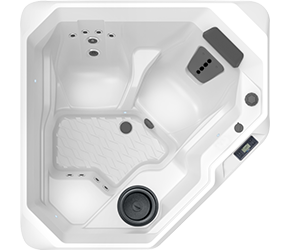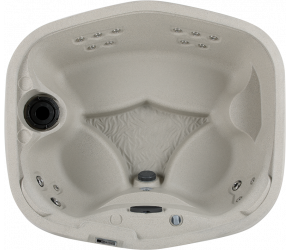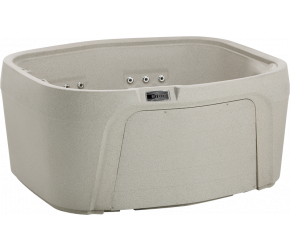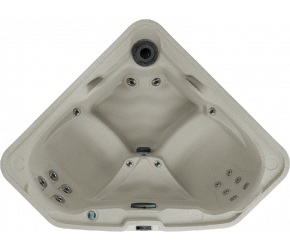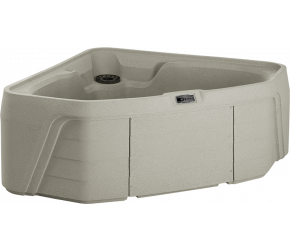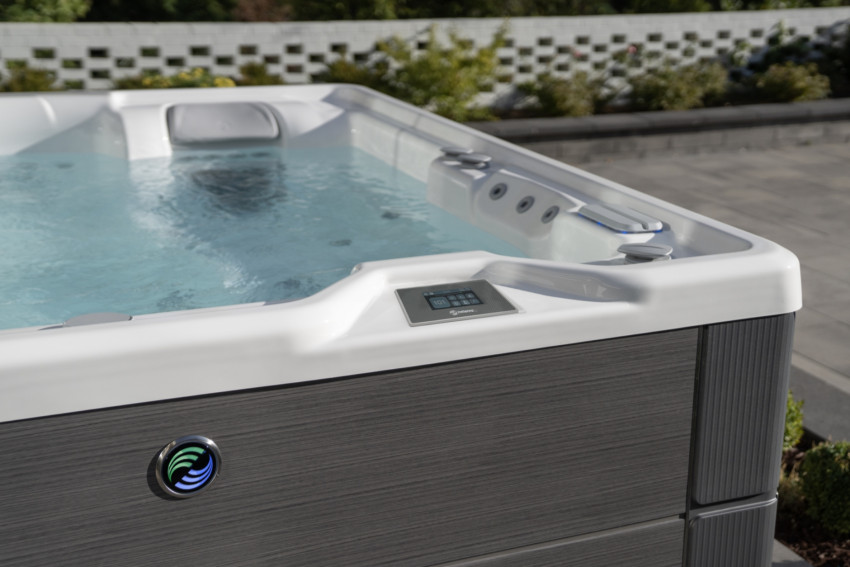Inflatable spas offer a mix of affordability and portability that have made them a popular choice for Aussie homeowners in recent years. They’re a fun and unique purchase; one that can see you enjoying a day spa in your own backyard.
An inflatable spa is exactly what it says on the packet: a hot tub made of flexible, inflatable material that you pump full of air, fill with water and enjoy. The question of whether you should buy one is slightly trickier, as while they offer a comparatively low upfront cost, inflatable spas aren’t as durable, efficient or luxurious as their more robust counterparts.
In this article we’ll be looking at the question of whether to buy an inflatable spa in more detail, with the aim of giving you the information you need to make the right decision for you.
So, without further ado, let’s learn about inflatable spas, and how they compare to an investment in a more traditional hot tub.
Should I buy an inflatable spa or portable spa?
At first glance you might presume that an inflatable spa and a portable spa are the same thing – inflatable spas are portable, after all. But portable spas represent a separate category of hot tub, offering a number of features that inflatables do not.
Portable spas, otherwise known as hot tubs, freestanding spas or Jacuzzis® (an eponymous brand), are pre-built spa pools that can be dropped into position (and can be taken with you when you move, thus the word ‘portable’) and that feature solid cabinetry in which all the components, like jets, pumps, heaters and insulation are contained.
While inflatables and portables are both moveable spas filled with pumped and heated water, inflatables can be deflated and packed away, while portables tend to offer a more luxurious, efficient and long-lasting ownership experience.
An inflatable spa might represent a wise purchase if:
- You can’t afford the upfront cost of a portable spa: Inflatables are cheaper to buy, though you should keep in mind that they can be more expensive to run.
- If you only plan to use your spa on special occasions: If you only plan an occasional soak, the higher running costs might not matter as much as the lower upfront price.
- You want to take your hot tub on trips: The ability to deflate and pack tightly away makes inflatable hot tubs ultra-portable.
- If you lack space: If you don’t have much space, inflatables can be deflated and stowed away while not in use.
A portable spa might represent a wise purchase if:
- You want a luxurious soak: High-quality portable hot tubs offer a better soaking experience than inflatables. You get the benefit of comfortable seating, targeted jets, and even relaxing sound and lighting systems.
- You plan to use your spa regularly: If you choose a portable spa with high-end insulation, efficient machinery and an innovative water care system, your running costs will be far lower than in
- You want a spa that lasts: Solid plastic is simply more robust than flexible plastic. It will last longer out in the weather, and won’t be anywhere near as vulnerable to punctures and tears.
You want to enhance your health and wellness: A cleverly designed portable hot tub with strategically placed jets can help you cope with any number of ailments, from arthritis to fibromyalgia, while improving everything from circulation to mental health.
Inflatable vs. Portable Spas comparison table
|
Inflatable Spas |
Hot Spring Freeflow® & Hot Spot® range |
|
|
Upfront cost |
$1,000 - $4,000 |
From $8,490 |
|
Lifespan |
2-3 years (average) |
10-25 years (average) |
|
Durability |
Prone to punctures and tears; vulnerable to weather |
Built with quality, robust materials designed to withstand the elements |
|
Energy efficiency |
Low; air insulation is poor at retaining heat, leading to high bills |
Running costs from $1 per day - lowest in Australasia |
|
Water care |
Basic filtration; requires frequent chemical adjustments and water changes |
FreshWater® Salt System extends water life meaning only 1 drain per year |
|
Massage |
Weak, bubble-style jets; minimal hydrotherapy benefits |
Customisable jet pressure for each seat, 5x more pressure than other spa brands |
|
Warranty |
Limited or no warranty |
Comprehensive warranties on components and a 20-year spare part guarantee |
Are inflatable spas expensive to run?
One of the first questions most people ask about inflatable spas is how expensive they are to run. On the plus side, inflatable spas are usually smaller than non-inflatable spas, so there’s less water to heat, and don’t generally feature jets that are as powerful, so they can use less power while moving the water around (though obviously both of these facts mean that inflatable hot tubs don’t offer the same level of luxury as other spas.)
The tripping point for inflatable spas is heat retention. When compared to high-quality insulation, the air within the walls of an inflatable model isn’t great at keeping the heat in. This is the number one ongoing cost that hot tub owners face, so while you might save some money upfront, some inflatable hot tub owners might find themselves out of pocket in the long run, or hesitant to use their spa at all.
What is an inflatable spa?
First things first: what exactly is an inflatable hot tub?
Inflatable hot tubs feature walls made of flexible, inflatable plastic, with jets placed either in these walls or in the base of the spa, and a pump and water heater circulating H2O outside of the spa. When pumped full of air, the walls have some basic insulation properties that help to keep the water warm.
Inflatable spas are usually circular, though they also come in other shapes like squares, rectangles and octagons. Some feature inflatable backrests and seats, and most come with a control box that allows you to control the jets and heat.
Inflatable hot tubs are generally made of layers of flexible materials, including polyester mesh, PVC, UV-resistant laminate, and other layers that aim to strengthen the spa. That said, the lack of solid materials means that inflatable spas can be prone to accidental punctures and tears.
Are inflatable spas expensive to run?
One of the first questions most people ask about inflatable spas is how expensive they are to run. On the plus side, inflatable spas are usually smaller than non-inflatable spas, so there’s less water to heat, and don’t generally feature jets that are as powerful, so they can use less power while moving the water around (though obviously both of these facts mean that inflatable hot tubs don’t offer the same level of luxury as other spas.)
The tripping point for inflatable spas is heat retention. When compared to high-quality insulation, the air within the walls of an inflatable model isn’t great at keeping the heat in. This is the number one ongoing cost that hot tub owners face, so while you might save some money upfront, some inflatable hot tub owners might find themselves out of pocket in the long run, or hesitant to use their spa at all.
Can inflatable spas be left out in winter?
Because they lack the insulation that you see in Hot Spring hot tubs, using an inflatable spa over winter can turn into a rather expensive affair. But can an inflatable spa simply be left out over winter, or do you have to drain it and deflate it before the season hits (the inflate and refill it should you get the urge to spa?)
In order to compactly fold away, inflatable hot tubs feature walls made of a thin, flexible fabric. Unfortunately this fabric doesn’t stand up to the elements particularly well – it can be affected by the sun in summer, and by the cold, particularly sub-zero temperatures, in the winter.
Water expands when it freezes, so if you leave your inflatable hot tub out over the coldest months, you run the risk of the water tearing the walls of the spa while it expands and solidifies into ice.
How reliable are inflatable spas?
It’s a universal truth: you get what you pay for. Inflatable hot tubs are the cheapest spas option for a reason – they aren’t known for their quality. Most of the manufacturers of these machines find themselves in a race to the bottom, attempting to outprice their competitors however they can.
This situation usually results in the use of cheap parts and materials that aren’t known for their longevity. Inflatable spas are therefore the most disposable of spas that rarely offer spare parts if a breakdown occurs.
The Hot Spring approach is a little different: we are the only Kiwi hot tub manufacturer that guarantees the supply of spare parts for 20 years – a testament to the confidence we have in the reliability of our machines. We also offer constant support through our extensive network of expert dealers found up and down the country. If you’ve got a hot tub problem, they’re ready to fix it.
How long will an inflatable spa last?
If most inflatable hot tubs are built rather cheaply, and if spare parts might be hard to come by, how long can you reasonably expect an inflatable model to last?
There’s an element of ‘how long is a piece of string’ to this question, but the average lifespan seems to be in the range of 2-3 years. That said, some inflatable hot tub owners report problems in the first few months of ownership, while others happily soak in their machines for five years or more.
2-3 years might seem like a decent amount of time… until you compare it to a Hot Spring. We build our spas to last by using the latest technologies and highest quality materials. We offer extensive warranties, and by guaranteeing spare parts for at least 20 years, you can be confident that your machine is protected against breakdowns for decades to come.
If you’re looking for a hot tub that you can enjoy for the long haul, look no further than a Hot Spring.
Do inflatable spas have powerful jets?
Can you expect a high quality hydromassage experience from an inflatable hot tub? The short answer is no, at least not when compared to a non-inflatable spa.
Once again, inflatable hot tubs are designed more with cost-effectiveness in mind than the soaking experience. Minimal investment is made in the jets, both in terms of innovation and build quality.
Hot Spring, on the other hand, is a global leader in hydromassage innovation. Our premium models feature up to 10 different styles of jet, each designed and strategically placed to soothe a specific part of the body. And speaking of powerful jets, none are more powerful than the hydraulic beasts that sit at one end of our Fastlane Pools E-Series swim spas, capable of moving up to 19,000L per minute!
Do inflatable spas need to be plugged in?
Yes, inflatable hot tubs do need to be plugged in, because a hot tub without power is essentially a bath. The electricity is used to heat the water, run the filter and power the jets, and because of the limited strength of those jets, a standard outlet is all you’ll usually need to run an inflatable hot tub.
But there are self-contained hot tubs that can also be powered from a standard outlet. Take the Hot Spring Freeflow range – our collection of entry-level hot tubs. These spas offer the style, innovation, soaking experience and build quality that Hot Spring is famous for, while featuring Plug’n’Play technology: installation is as simple as placing your spa, filling it, plugging it in and turning it on!
Does an inflatable spa need building consent?
What are your responsibilities as the owner of an inflatable hot tub in Australia? There are no universal rules that cover the whole country. Building consent rules are determined by local councils, as are fence requirements, although many councils subscribe to the following regulation for the latter:
"If a spa can hold 300mm of water or more, it must be surrounded by an approved barrier."
It’s wise to contact your local council before you purchase any spa, inflatable or otherwise, to check the rules in your local area.

The truth is that placing an inflatable hot tub next to a portable hot tub doesn’t make for a fair comparison. An inflatable is cheap and cheerful – an item made for those with a limited upfront budget, limited space, and who want to enjoy a soak a handful of times a year, perhaps on the road.
In almost every other situation, a portable hot tub represents a far wiser investment. Offering superior efficiency, longevity and luxury, these hot tubs are ideal for those who are serious about their water-based investment.
Unlike a disposable inflatable, a Hot Spring portable spa is a valuable addition to your home. It’s built to last for years, not months, and can even be taken with you if you move. With our 20-year spare part guarantee, you can be confident that you'll have the support you need to keep your spa running smoothly for decades to come.
If you’re ready to enjoy the ultimate portable hot tub experience, look no further than a Hot Spring. Get in touch with our friendly team, or book a test soak today!


